History seems to be making news in Sri Lanka these days.
‘Protect Our Jurassic Park’ screams a headline in the Sunday Times this week
The call to revamp Archeological laws to preserve the past is pertinent if not urgent.
The report based on concerns expressed by experts suggests some of the pre-historic fossils are endangered in the absence of proper protection.
Their entreaty is laudable.
But what the brigands of horrendous Tomb Raiders are doing to plunder and destroy the nation’s heritage is most condemnable.
Hundreds of renegade ‘ Indiana Jones’ types have been caught with their hi-tech backhoes, electronic locators, metal detectors and dynamite ferreting mainly into places of worship in search of buried treasure.
The country apparently has laws to deal with these despicable rodents among whom are some sundry politicos , uniformed personnel and even sinister monks.
But with relatively low incidence of enforcement and negligible deterrent punitive action our ancient temples face predictable doom.
Seriously, is it not time to reinforce heritage protection laws and consider having special task forces to deal with the vultures of culture?
Needless to say Sri Lanka is endowed with colossal evidence of inspirational works of a glorious millennia.
We take pride just to gaze in awe at the magnificent stupas, legendary murals of Sigiriya and the stunning carved- in- rock tributes to the Noble One that our creative ancients have contributed for posterity.
Arguably the Cultural Triangle administration is doing whatever it can to care for most of the important heritage sites. What about many other places that bear testimony to our great cultural heritage?
Much needs to be done before the rot sets in.
Much could be done to promote awareness among visitors both local and global about the rich history that is hidden behind these beautiful works of ancient art.
Just to mention a couple of historic places that needs attention are the many splendored Buduruvagala edifice off Wellawaya and the mystic Kustarajagala near Weligama.
Both belong to the Mahayanist style of Buddhist architecture that prevailed during the time of their creation.
Fifty One foot high standing Buddha hewn into solid rock over one thousand years ago at Buduruvagala is said to be the tallest of its kind in the world today.
That is after Taliban senselessly destroyed the once tallest Bamyan Buddha twelve years ago.
Flanking the majestic Buddha image are six other intricately carved figures said to be that of Bodhisattvas , foremost among them Avaloketsivara and Tara Devi.
Hidden in a village hamlet off the beaten track, Buduruvagala is hardly a tourist hot spot. Nor many pilgrims are seen as one may expect there.
Yet this Mahayana monolith has continued to generate interest among scholars and historians here and abroad.
For several years between 1962 and 1977. Professor Hans Braker a Dean at the prestigious University of Trier in the Federal Republic of Germany made many visits to the site while studying Sri Lanka’s Mahayana links.
Dr. Braker a specialist in Asian affairs at this university , the alma mater of Karl Marx , spoke to me in 1976 about his intensive research into Buduruvagala while searching for connections in the Indian subcontinent. He even sought relevant information in the Himalayan regions of Nepal, Ladakh and Bhutan.
For some inexplicable reason the Mahayanist influence on some of Sri Lanka’s splendid works of ancient art is rather meagre, albeit the significance.
One reason could well be due to the majority and overwhelming Theravada tradition in the country.
Mahayana concepts that originated in the Gandhara region is said to have come to Sri Lanka long after Theravada had taken steady root.
They came and they went, but not before leaving formidable timeless rock-solid telltales.
Creative Mahayanists provided undeniable proof by way of art and architecture.
It was also when Mahayana practitioners enjoyed royal patronage especially during the reign of King Mahasen while monks of both schools lived side by side in monasteries. Sometimes in harmony.
Contemporary archaeologists believe that the much beloved Aukana Buddha image belongs to Mahayanist by way of style.
Adding further credence to this is the very name Aukana. The Buddha image destroyed by Taliban stood in Bamyan region in present Afghanistan that used to be called Vokkana or Vakona.
Both images depicted Buddha in what is known as the ‘Asisa Mudra.’
It is heartening to note that Aukana image is still being reproduced at various temples and prominent places of Buddhist worship in the country.
A gigantic replica was erected recently at the Devinuwara Vishnu temple.
The presence of the Bodhisattva pantheon is several ancient works of art in Sri Lanka have been recorded in recent times.
Further research in this regard will be invaluable in their very essence.
According to historical data the vibrant Silk Road activity during that time would have inevitably contributed to the cross-cultural influences like Mahayana-Theravada interaction.
Chinese pilgrim monk Fa Xian (412-414 AD) is said to have carried with him Sanskrit Mahayana Sutras from the Abhayagiri monastery after spending few years in Sri Lanka.
Providing ample Mahayanist evidence are magnificent monuments like Buduruvagala, Aukana, Gal Vihara, Sanchi, Angkor Wat, Borobudur, and a myriad of cultural artifacts of North, South and South East where Buddhism continues to thrive.
Frescos and murals in caves like Ajanta , Ellora and also Sigiriya depict art that have decidedly Mahayana influence. Some claim, contentiously though, that the famous Apsaras are depiction of Tara the consort of Bodhisattva Avaloketisvara.
So is Bodhisattva Samanthabadra rock carving standing forlorn by the roadside off Weligama crying out for better protection from the elements. Popularly known as Kustarajagala it bears testimony to a Mahayana past.
A solid gilt bronze cast statue of Bodhisattva Avaloketisvara belonging to the late Anuradhapura period (8-9 Century) was discovered in the late sixties at Sri Sangabo Vihara at Veragala.
Just as much as it is regarded acceptable to use this image in Sri Lanka’s tourism promotion material as they do now, it would certainly be the responsibility of those relevant to fortify protection to whatever is left of our ancient works of art and architecture.
As tomb-raiders in quest of filthy lucre eye these to make a quick fortune, countermeasures should be the order of the day.
Yesterday!!!
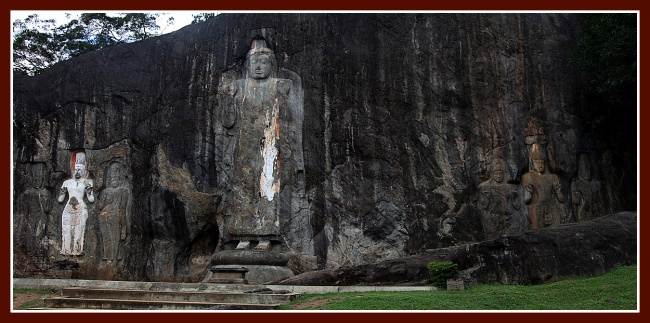
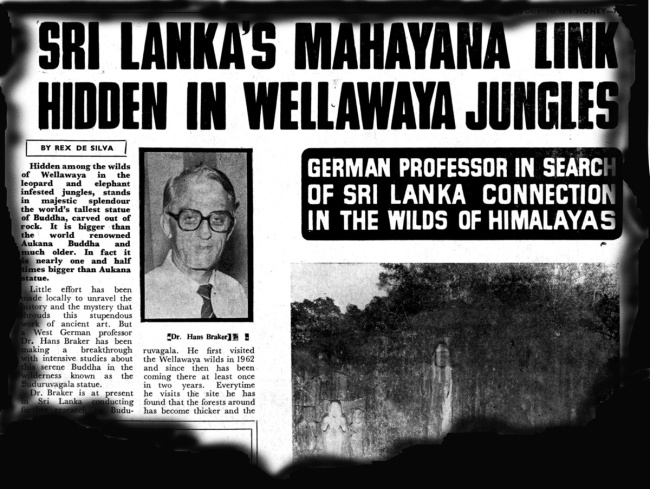
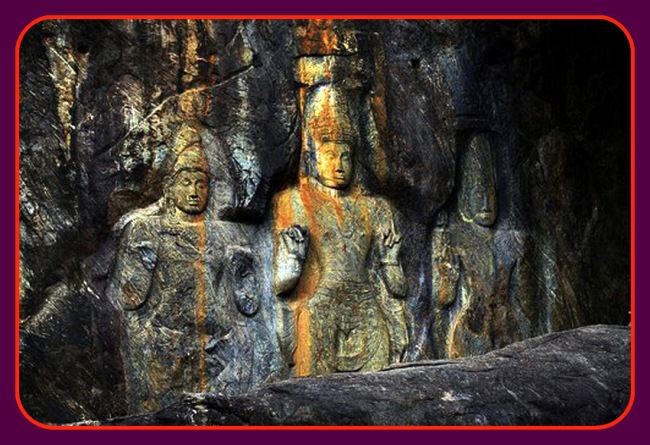
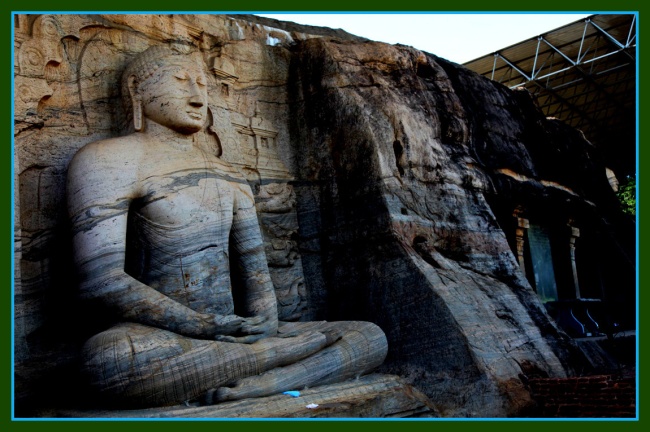
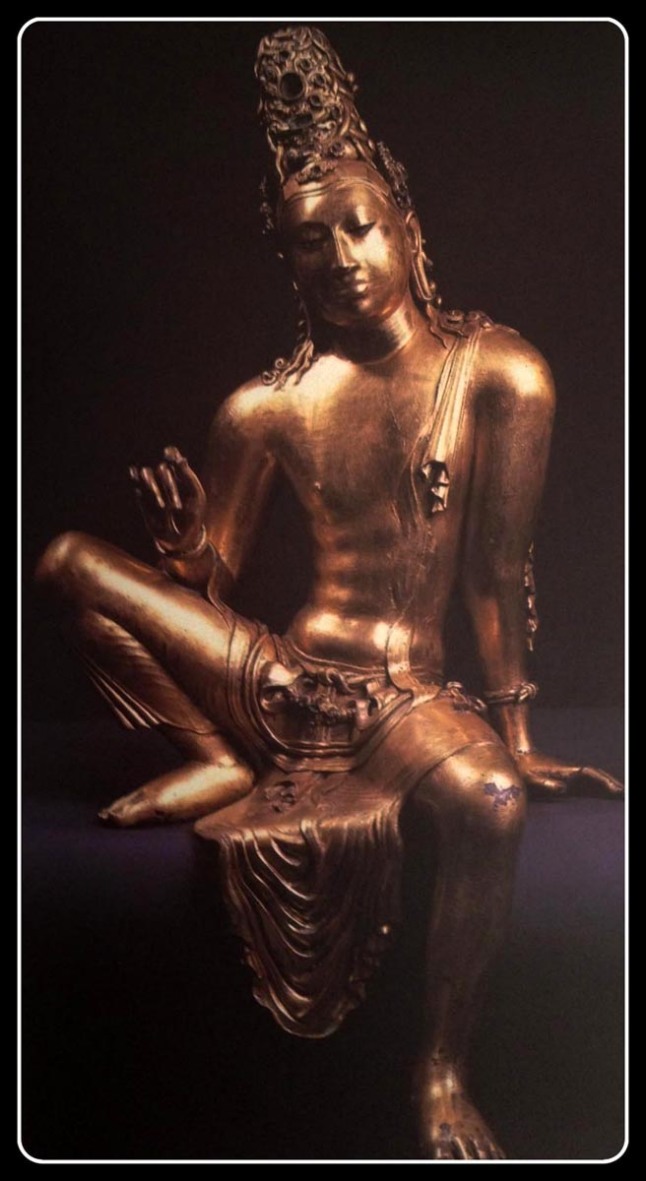
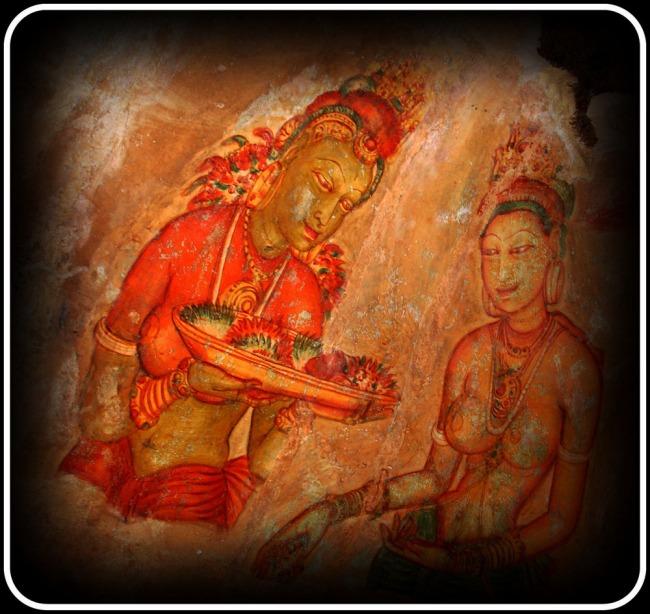
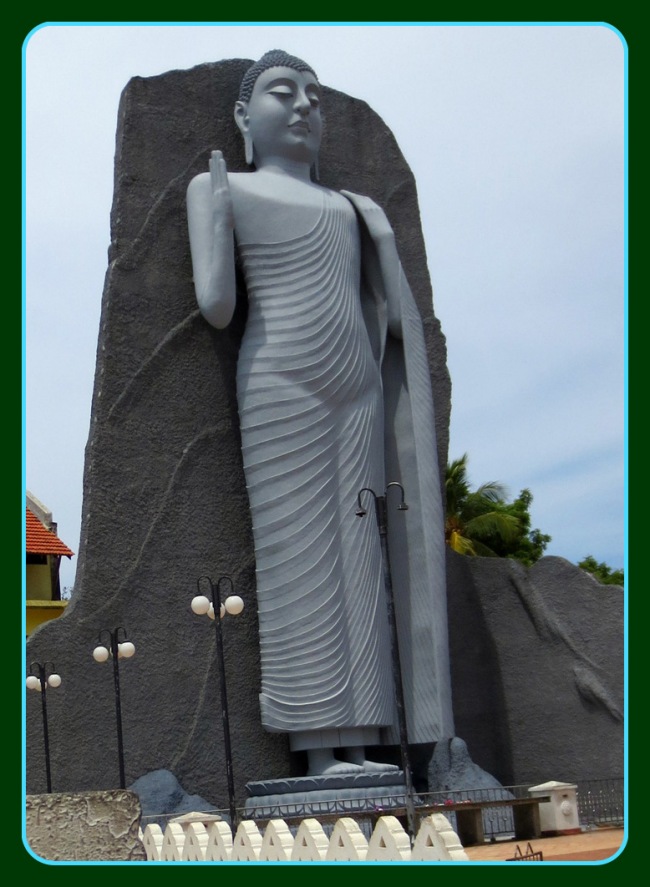
Food for thought indeed. If only we can continue to be in harmony with these two schools of thought in Buddhism so much can be gained. BTW, how do the Galvihara Buddha images show Mahayana style? That is indeed very new to me.